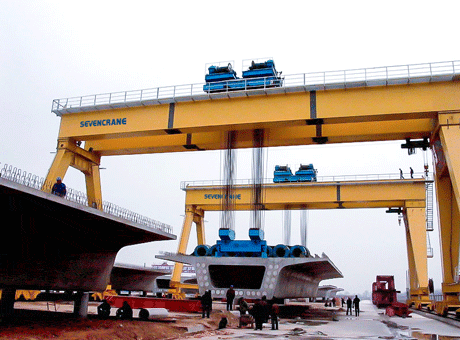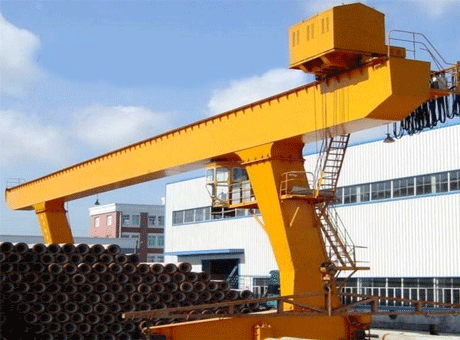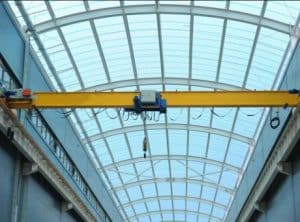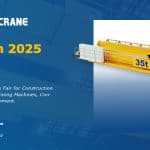Bridge crane is a lifting equipment that is placed horizontally over workshops, warehouses and yards for lifting materials. Because the two ends of the bridge crane are located on tall cement columns or metal supports, and are shaped like a bridge, they are commonly called bridge cranes. It is a kind of lifting machinery with wide range of use and large quantity.
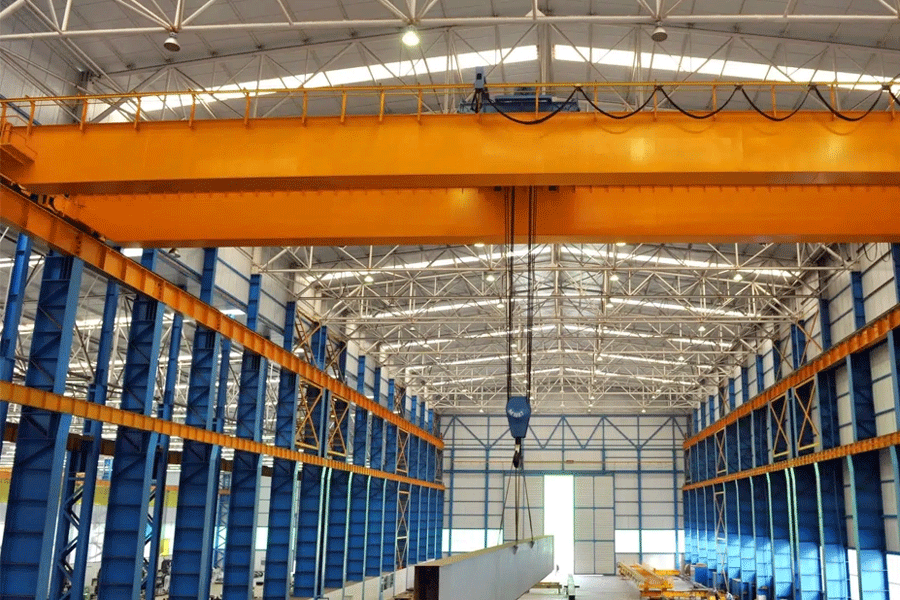
Grúas puente son herramientas y equipos importantes para mecanizar y automatizar el proceso de producción en la producción industrial moderna y el transporte de elevación. Pueden reducir la intensidad laboral de los operadores y mejorar la productividad. Las grúas puente se utilizan ampliamente en empresas industriales y mineras, industrias químicas y siderúrgicas, transporte ferroviario, puertos y terminales, facturación logística y otros departamentos y lugares. Es un equipo indispensable en las actividades productivas de las personas.
There are many types of bridge cranes, among which general bridge cranes and gantry cranes are more common. The structures and operating methods of these two types of cranes are basically the same. The difference lies in the position of the trolley running track. The general bridge crane is at high altitude. The gantry crane is on the ground, which brings about different support structures.
Although there are different types and models of bridge cranes, with differences in appearance and structure, they all have one thing in common, which is the intermittent working method. A working cycle process generally includes: displacing the material through the lifting and lowering of the fetching device, and then moving in the opposite direction to return to the original position or another position for the next working cycle. There is usually a short pause between the two work cycle processes. It can be seen that when the bridge crane is working, each mechanism is often in alternating motion states of starting, running, braking, and forward and reverse phases. In addition, bridge cranes also have the following working characteristics:
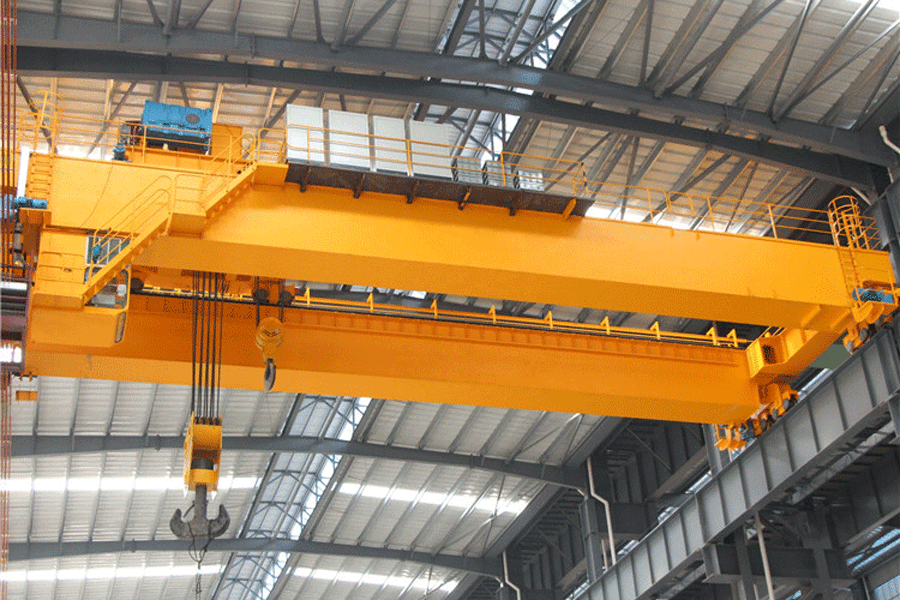
1. Las máquinas de elevación suelen tener una estructura metálica de gran tamaño y una estructura mecánica relativamente compleja. Pueden realizar un movimiento de elevación, descenso o varios movimientos horizontales. Durante la operación, a menudo se realizan varios movimientos en diferentes direcciones al mismo tiempo, lo que resulta técnicamente difícil.
2. The materials to be hoisted are diverse, and the load also changes, ranging from dozens of tons to hundreds of thousands of tons, and as light as tens of kilograms. The lifting height is also different, ranging from tens of meters to less than 1 meter. The lifted items are also irregular in shape, as well as granular, hot-melt, and flammable and explosive items, making the lifting work complicated and dangerous.
3. La mayoría de los equipos de grúa deben operar dentro de un amplio rango y algunos están equipados con rieles, ruedas de acero o orugas tipo neumático, que tienen un gran espacio de movimiento y grandes superficies de peligro.
4. Hay muchas piezas móviles expuestas, que a menudo están en contacto directo con el personal de elevación (como ganchos y cuerdas).
5. The working environment is complex. There are lifting equipment in operation in industrial and mining enterprises, ports, construction sites and other places. The operation will also encounter dangerous factors such as high temperature, high pressure, flammable, explosive, power transmission lines, strong magnetic fields, etc. These adverse conditions are detrimental to both people and equipment.
6. Las operaciones a menudo requieren cooperación humana y son bastante difíciles. Los operadores y comandantes deben cooperar, colaborar y cuidarse unos a otros con habilidad. Los operadores deben tener la capacidad de hacer frente a emergencias en el sitio.
With the rapid development of modern industry and the continuous advancement of science and technology, some new changes and new features have appeared in the structural design and degree of automation of the bridge type.
For example, in terms of structure, domestic lifting equipment uses computer optimization design to improve the mechanical performance of the crane and reduce its own weight. In terms of performance, we continue to introduce advanced foreign technologies and adopt novel energy-saving speed regulation systems, such as thyristor cascade open-loop or closed-loop systems, with a speed regulation ratio of up to 1:30. As the requirements for speed regulation increase, frequency conversion speed regulation systems and microcomputer control technology have also been applied in cranes.
In short, with the rapid development of science and technology, various advanced domestic electrical control and mechanical technologies are gradually being applied to cranes. Grúas puente are becoming more and more automated, their structures are becoming simpler, their performance is more reliable, their lifting capacities are getting larger and larger, and their varieties are becoming more and more complete.








